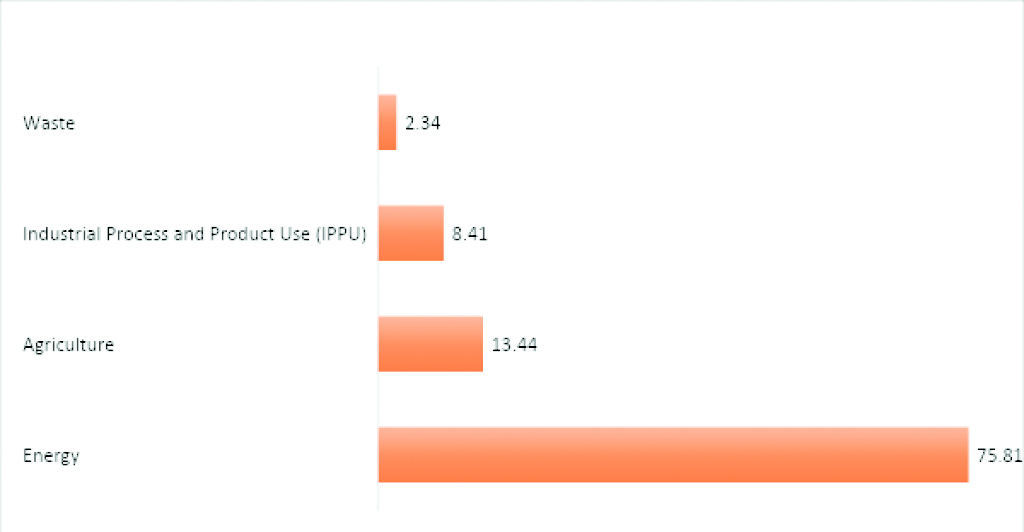India reduced its GDP emission intensity by 33 per cent between 2005 and 2019, achieving the target 11 years in advance, according to a government report. Despite a steady 7% annual growth in GDP, the country’s emissions increased by only 4% per year in that timeframe. This indicates India’s success in disconnecting its economic expansion from the rise in greenhouse gas emissions, a positive step towards environmental sustainability.
During the ongoing climate discussions in Dubai, officials announced the forthcoming submission of ‘The Third National Communication to the United Nations Framework Convention on Climate Change’ report. This comprehensive document, set to be presented to the UN climate change body, encompasses vital details about a nation’s greenhouse gas emissions, its susceptibility to climate shifts, and the strategies implemented to combat emissions while adapting to the repercussions of climate change.
In a recent statement, Environment Minister Bhupender Yadav highlighted India’s environmental milestones, citing a significant 33% reduction in GDP emission intensity between 2005 and 2019. Impressively, India surpassed this target a remarkable 11 years ahead of schedule. Moreover, the nation established an additional carbon sink, absorbing 1.97 billion tonnes of CO2 equivalent during this period. Despite these achievements, India’s overall emissions, accounting for the Land Use, Land-Use Change, and Forestry sector, have shown a 4.56% increase compared to 2016 figures.
The emission intensity of the economy refers to the total amount of greenhouse gases emitted for every unit increase of gross domestic product (GDP). It is different from absolute emissions.
“We are well on track to achieve the target of reducing our GDP emissions intensity by 45 per cent by 2030, compared to the 2005 level, and of creation of additional carbon sink of 2.5 to 3.0 billion tonnes through tree and forest cover by 2030,” the minister said.
Nationally Determined Contributions or NDCs are any country’s national action plans to limit the earth’s average temperature rise to well below two degrees Celsius and preferably to 1.5 degrees Celsius as compared to the pre-industrial (19850-1900) levels. Scientists say climate impacts like heat/cold waves, floods, cyclones, heavy rains, melting of glaciers and resulting sea level rise will be worse if the guardrail of 1.5 degrees Celsius is breached.
As per the third national communication, the primary contributor to human-induced emissions was the energy sector, responsible for the largest share at 75.81%. Following this, agriculture accounted for 13.44%, trailed by Industrial Process and Product Use at 8.41%, and waste management at 2.34%.
The LULUCF sector removed 4,85,472 gigatonnes of carbon dioxide equivalent (GgCO2e) of emissions. Considering total emissions and removals, India’s net national emissions in 2019 were 26,46,556 GgCO2e (or 2.6 billion tonnes of CO2e).
India is among the 26 developing countries which have submitted their national communication based on the GHG (Greenhouse gases) inventory of 2019 or later years. China has submitted its latest communication with GHG inventory of 2014; Brazil of 2016; South Africa of 2017 and Saudi Arabia of 2012.
Pitching India as a global climate leader which has achieved its earlier NDC targets well ahead of schedule, Prime Minister Narendra Modi on Friday proposed to host the annual UN climate talks in the country in 2028. If India’s proposal to host the UN climate conference in 2028 or COP33 is accepted, it would be the next big global conference in the country after the G20 Summit earlier this year.
India hosted COP8 in New Delhi in 2002 but it was then a small event, unlike the glitzy affair it has become over the years. Modi highlighted that India is home to 17 per cent of the world’s population, but its share of global carbon emissions is less than 4 per cent. “India is one of the very few economies in the world that is on track to achieve its NDC targets,” he said.
India has surpassed its emissions intensity goals significantly, achieving them 11 years ahead of the projected timeline, while also reaching non-fossil fuel targets nine years earlier than planned. The nation’s ambitious targets include a 45% reduction in GDP emission intensity by 2030 from 2005 levels and a goal to achieve 50% of cumulative electric power installed capacity from non-fossil fuel sources by 2030.
Furthermore, India has committed to transitioning into a net-zero economy by 2070. Addressing COP28, the Prime Minister underscored the historical exploitation of nature by a small fraction of humanity over the past century, stressing that the entire global population bears the consequences, particularly those in the Global South. He highlighted the disproportionate burden faced by poorer and developing nations due to the climate crisis, despite their minimal contribution to it.
Highlights
- Emphasized India’s commitment to combating climate change, reducing emissions, and enhancing adaptive capabilities.
- Based on the 2019 National Greenhouse Gas Inventory.
- India stands among the initial 26 developing nations to submit communications relying on the 2019 or later GHG inventory.
Emission Intensity Achievements:
- India successfully reduced GDP emission intensity by 33% between 2005 and 2019.
l Initially targeted a 33% reduction by 2030 in the original NDC submission, later revised ambitiously to 45% under the Paris Agreement in 2022.
Non-Fossil Fuel Power Capacity:
- India currently boasts a 41% share of clean power capacity, exceeding the earlier NDC goal of 40% by 2030.
- Revised the target to a more ambitious 50% as of 2022.
Power Generation Statistics:
- Coal accounted for 73% of India’s power generation in 2022-23.
- ‘New renewables’ (excluding hydropower) contributed 12%.
- Projections foresee coal’s share decreasing to 55% by 2030, while new renewables are estimated to reach 31% by the same year.
GHG Emissions by Sector (2019):
- Energy sector contributed the most to GHG emissions at 75.81%.
- Agriculture sector accounted for 13.44%.
- Industrial processes and product use (IPPU) sector constituted 8.41%.
- Waste management contributed 2.34% to total emissions.


